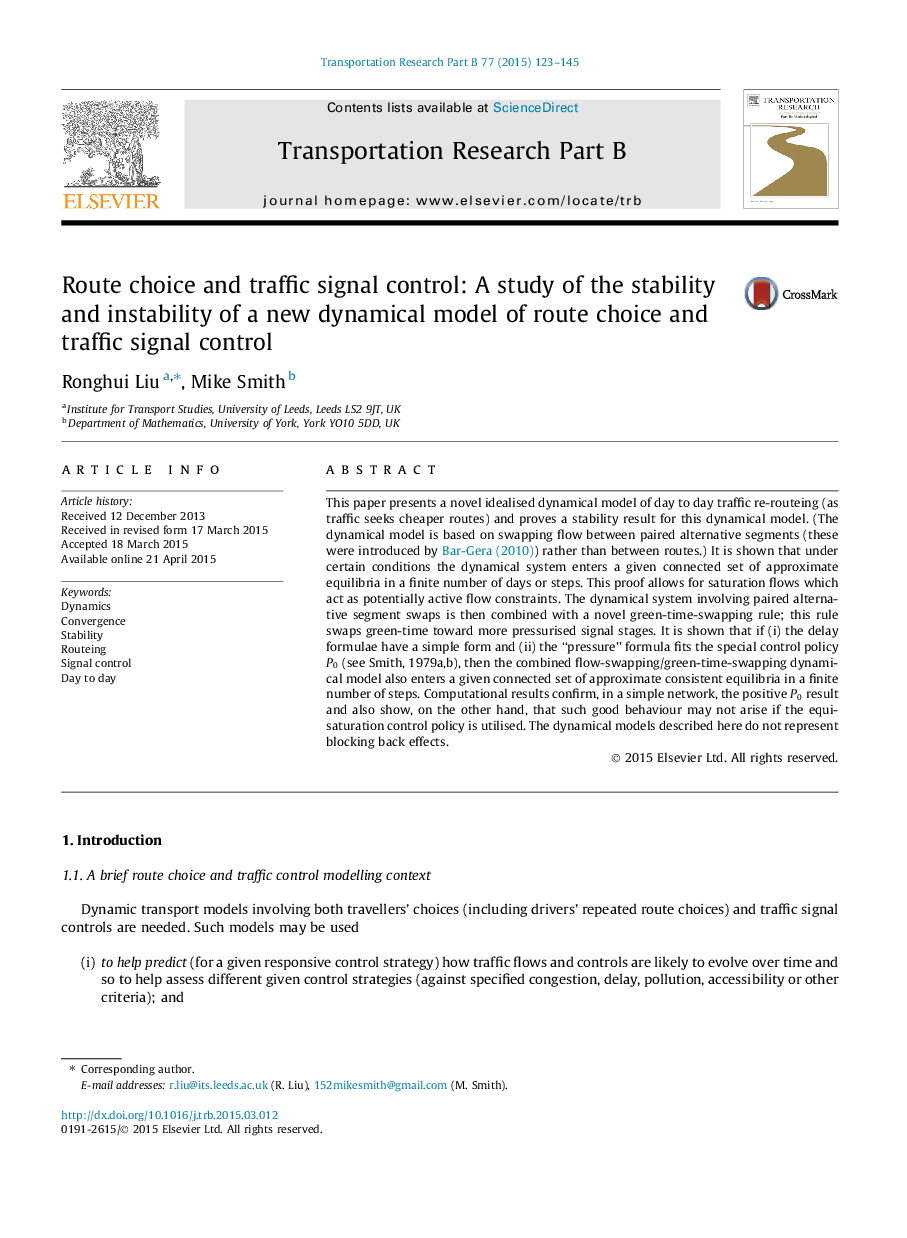| کد مقاله | کد نشریه | سال انتشار | مقاله انگلیسی | نسخه تمام متن |
|---|---|---|---|---|
| 1131837 | 1488966 | 2015 | 23 صفحه PDF | دانلود رایگان |
• A combined dynamical mathematical model of route-choice and traffic signal control.
• To represent control, link red-time is considered as an extra flow on a link.
• A novel dynamical model of route flows and stage red-times is stated.
• A stability result is proved for a general network under the signal control policy P0P0.
• Instability and pitchfork bifurcation .
This paper presents a novel idealised dynamical model of day to day traffic re-routeing (as traffic seeks cheaper routes) and proves a stability result for this dynamical model. (The dynamical model is based on swapping flow between paired alternative segments (these were introduced by Bar-Gera (2010)) rather than between routes.) It is shown that under certain conditions the dynamical system enters a given connected set of approximate equilibria in a finite number of days or steps. This proof allows for saturation flows which act as potentially active flow constraints. The dynamical system involving paired alternative segment swaps is then combined with a novel green-time-swapping rule; this rule swaps green-time toward more pressurised signal stages. It is shown that if (i) the delay formulae have a simple form and (ii) the “pressure” formula fits the special control policy P0P0 (see Smith, 1979a,b), then the combined flow-swapping/green-time-swapping dynamical model also enters a given connected set of approximate consistent equilibria in a finite number of steps. Computational results confirm, in a simple network, the positive P0P0 result and also show, on the other hand, that such good behaviour may not arise if the equi-saturation control policy is utilised. The dynamical models described here do not represent blocking back effects.
Journal: Transportation Research Part B: Methodological - Volume 77, July 2015, Pages 123–145
